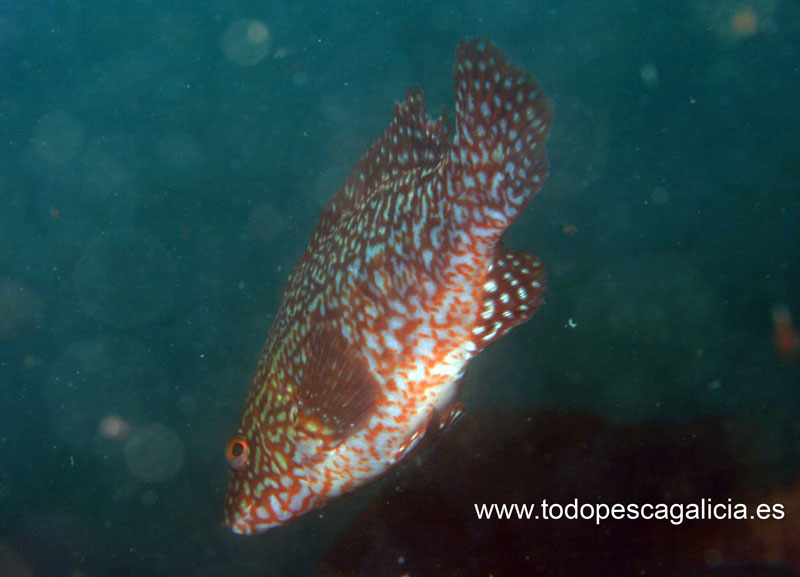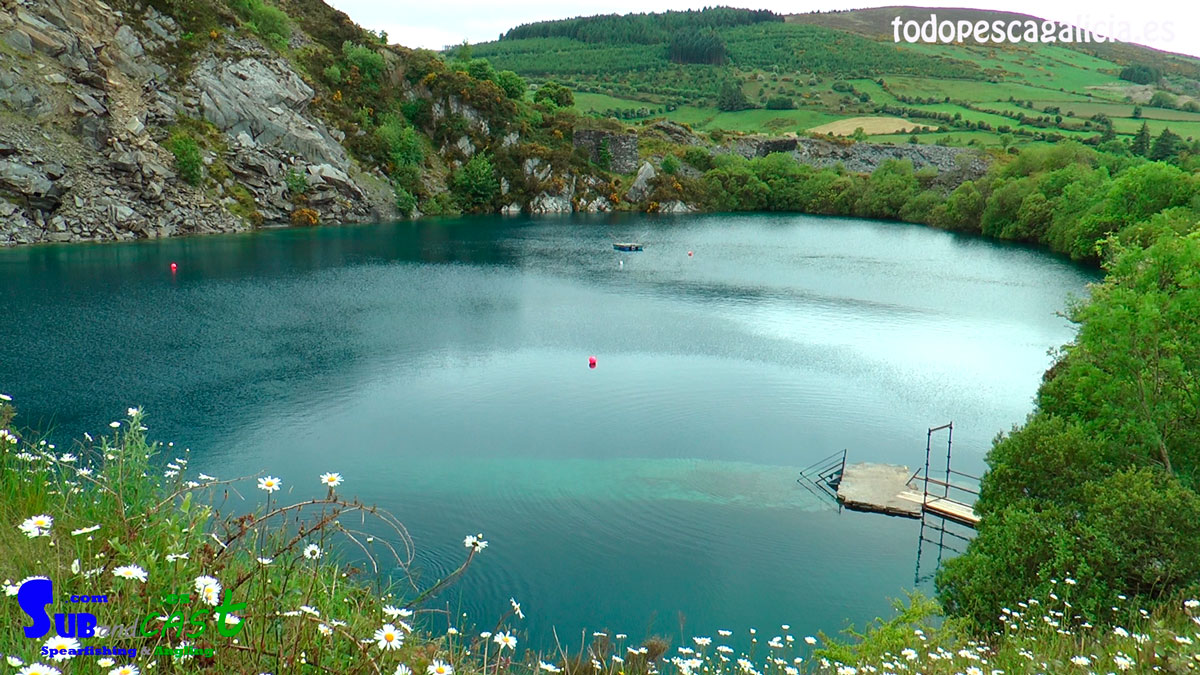THE BALLAN WRASSE
On this article, we are going to talk about one specie, Labrus bergylta, relating it to the red and white ballan wrasse (besides the other colors are also the same specie) for being considered a better quality catch, both in the kitchen and in the sport. We are not going to go through its biology and we are going to focus on what is interesting for us: how to fish it.

Nobody doubts that a big ballan wrasse is a great catch. It can be difficult a lot of times and other can be easy, the same as any other species. It stands out due to the size it can reach, over 5 kilos, being usual between 2 and 4 kilos.
The color, which goes from yellowish, greenish to strong red, with the usual spots. It will depend on many factors, but the most usual is the strong red at depth and lighter colors between the kelp.

WHERE CAN WE FIND IT
The reality is we can find ballan wrasse almost anywhere: breaks, between the kelp, on deep spots… But depending on some factors it will be easier in ones or others. Let’s see them:
– Period of the year
The period of the year affects a lot on ballan wrasse fishing. We are going to see how, according to the seasons.
Winter: With the winter’s cold waters the best option is to look for the big ballan wrasse at depth. It will be more difficult to see them on the surface, eating under the breaks. The best technique will be falling, stalking and inside caves close to pinnacles. They are less active due to the water temperature, sometimes it seems they vanished. So, fishing deeper than 15-20 meters will be very effective. We always have to take in mind that it’s winter and the water column keeps almost the same temperature in all of it: cold.
Spring: The water starts to warm up and, above everything, the kelp starts to grow. It is also the breeding season for this specie. Putting all together, we find the best moment to the ballan wrasse fishing. The sand extensions with rock bars, in which the seaweed is starting to grow (the spots they choose for the spawning), are the best places to fish them. Slow stalks, mixed with the waiting technique. We will find them even on very shallow areas (4 or 5 meters) to, of course, deeper waters. Fishing them becomes easy when we have a proper technique. The stealth will be our best weapon. When the temperature rise, during the high tide, we will see them also under the breaks. Big ones in half a meter of depth, specially with warm water and a bit dirty.

Summer: The kelp is already big and the water temperature changes a lot depending on the wind. This factor will be one of the most decisive to choose the fishing technique. When we find a noticeable termocline, they prefer the warmer water. During the high tide on very shallow water. But some of them, usually the biggest ones, stay very deep, around caves and big stones. Specially during the low tide, and sometimes going up in the high tide. When the water is not cold, fishing in the kelp will be very productive. Doing short stalks in the canals.
Autumn: With the Spring they are the best fishing season. The kelp starts to break and we find the higher temperatures of all year. And also it normally matches with calm days and low wind. We will find the ballan wrasse confident among the half broken kelp. And also in very shallow waters. With low tide, deeper or in the canals and with high tide more active.
ACORDING TO THE TIDE
The ballan wrasse usually stays more active between half tide and high tide. It goes up to eat, going out of the caves or the kelp. During the low tide, moment when it find less food, it stays passive. Often inside holes where is impossible to enter for us. It’s common to see small fish and until it’s the good moment of the tide, the big ones don’t show up. And when we try to chase them, they go inside the caves in ways that is impossible for us to see them. The big ones do this often.

So, during the high tide, it’s better to look for them in spots where they are active, in shallow or middle water. Under the breaks or in the kelp. Sometimes in less that 1m depth.
During the low tide it is better to look for them falling deeper, close to good caves or big rocks. A lot of the time, they feel safer at depth (or less disturbed by spearos) and they stay in the entrance or close, and we will be able to see them.
TECHNIQUES
We will be able to fish the ballan wrasse with all the common spearfishing techniques. Some will be more effective, depending on the spot and the season, as we have already seen.
The stalk is often the most effective. Being discrete, in shallow water under the breaks, in the kelp, in spots with caves… We will be able to catch them by surprise, before they detect us, and a lot of times, even get close without scaring them.
The waiting technique, mixed with the stalk is another great method. If we go slowly and we don’t scare them, waiting will cause that they come to us.

The falling technique is very useful when we spearfish deep. In areas with big rocks and caves, drops from rock to sand… we use the dive and the descent to fall on top of them. In spots that are not frequently fished, they will stay looking at us, moving their fins a lot of times. It’s an easy fishing when this happens. This was very usual some years ago, when spearfishing deep was not common. Nowadays, they have learned.
We will find good ballan wrasse inside the caves. Specially after seeing them go inside. They often choose difficult spaces that even won’t give an option to shoot.
TRICKS
The ballan wrasse is a curious animal, waiting, making noises on the rocks, the sand or our throat… can make them come close.
They hide themselves very well. When there is some seaweed, we have to pay attention, probably we won’t realize that there is one looking at us. An eye between the kelp, a mouth in the entrance of a small cave… A slow fishing, without sudden moves to avoid scaring them, and pay a lot of attention.
Let the small ones and the middle ones pass by. It’s common that the small ones come in first place, with some big one around. If we shoot the first one, we will miss the big one. So it’s better to wait a little bit more.
Stealth, is very important for this fishing. And also read accurately the sea, the season, the wind and look for them where we should.

Underwater crests that come from big depths are very good spots. The big ballan wrasse come up to eat and we can see them there, but they are also very fast and untrusting. We should be fast shooting.
When they are around, if we have a good technique and we know how to see them, they are easy to capture. Although they are more evasive and faster everyday. The deeper we go, the more confident they normally are, and it will be easier to capture them. And they are usually bigger.






























